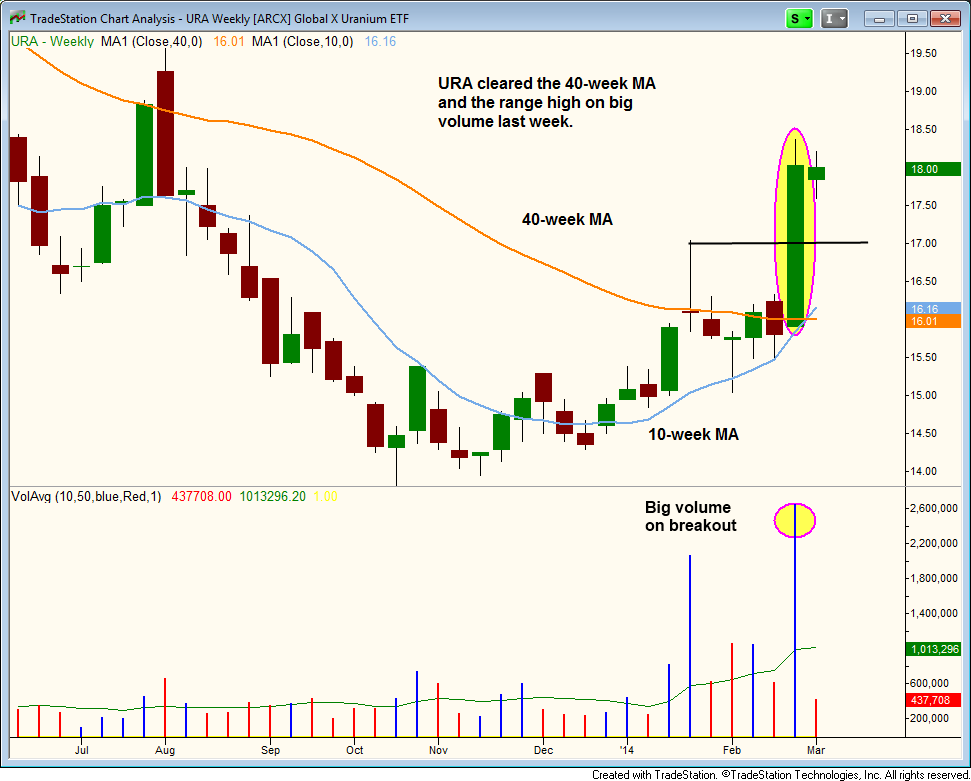The 5 Most Important Chart Patterns For ETF Traders
Post on: 16 Март, 2015 No Comment

by Cory Mitchell on December 5, 2012 | Updated December 8, 2014
Chart patterns are a very useful tool because they occur regularly—providing you with lots of trade candidates—and also provide everything you need to trade. When you spot an ETF chart pattern, and know how to utilize it, the pattern provides you with an entry point, stop-loss price as well as a profit target. While no strategy is perfect, and chart patterns don’t produce a profit all the time, learning to use them in your trading can greatly enhance your ability to analyze and profit from ETFs [see ETF Technical Trading FAQ ].
1. Head and Shoulders
The head and shoulders is a topping pattern, signaling an uptrend is likely over and a downtrend is commencing. The pattern is created when the price rises (left shoulder), then dips, rises again to a new high (head), declines, and then rallies again but not as high as the previous rally (right shoulder).
Usually the left and right shoulder will reach similar heights, although in the real-world these levels may vary marginally from one another [see 3 ETF Trading Tips You Are Missing ].
The SPDR Select Sector Financial (XLF, A ) created a head and shoulders pattern in early 2011, and ultimately foretold of a significant top in the ETF.
Figure 1: Financial Sector ETF – Head and Shoulders Pattern
That the right shoulder is lower than the head shows the market is losing momentum, but the pattern is not complete until the price moves below the neckline or the breakout point. The neckline is a trendline connecting the lows of the pullbacks, also called “armpits.” The breakout point is simply the lowest point in the pattern. Either can be used as an entry point—when the price drops below either of these levels it signals a further decline.
Once a trade is made, a stop loss can be placed just above the right shoulder to limit. The total height of the formation—the top of the head minus the lowest low—can be used to establish a profit target as well.
The high of the formation in figure 1 is $17.20 and low between the head and right shoulder is $16.24, therefore the height is $0.96. The height is subtracted from the low point of the formation to get a profit target: $16.24 minus $0.96 to get $15.28. In this case, the market fell much further than the target price.
While the pattern can be used to enter short trades, it is also a warning to those that are long that a correction is likely coming.
2. Inverse Head and Shoulders
There is also an inverse head and shoulders pattern. This occurs at market bottoms and is the same as the normal head and shoulders except that it is flipped upside down. In the summer of 2012 this pattern appeared in the S&P 500 SPDR (SPY, A ) ETF and signaled a trend reversal [see also Free Report: How To Pick The Right ETF Every Time ].
Figure 2: S&P 500 SPDR – Inverse Head and Shoulders Pattern
The neckline, as in Figure 1, is too steep to be of use for an entry signal. Therefore, the pattern completes and an entry is taken when the price moves through the breakout line (high point of the armpits). A stop is placed just below the right shoulder and the target is calculated by adding the height of the formation (high point minus low of the head) to the breakout price.
3. Triangles
These patterns are quite common as the three different types of triangles are created by converging price action. Trendlines are used to draw the pattern, and an entry is signaled when the price moves above or below either of the trendlines.
Symmetric
Symmetric triangles occur when the price is making lower highs and higher lows; when you draw the trendlines both trendlines will move towards each other. The SPDR Select Sector Technology ETF (XLK, A ) created a symmetric triangle in late 2011.
Figure 3: Technology ETF – Symmetric Triangle
The price broke through the upper trendline of the triangle—a long entry triggersignaling an upside breakout and a move higher. A stop is placed just outside the opposite side of the triangle [see also 5 Simple ETF Trading Tips ].
The target is calculated by taking the height of the formation and adding it to the breakout point. In this case, the high was $26.54 and the low was $24.01 for a height of $2.53. The breakout price was $25.90, so the target is $28.43.














